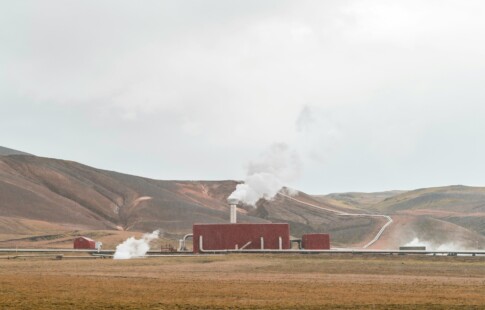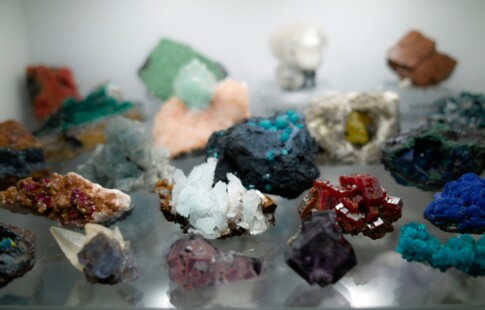
4 Alternatives to Fossil Fuels You Should Know
We are reader-supported. When you buy through links on our site, we may earn affiliate commission.
Fossil fuels form from fossilized animals and plants that were alive millions of years ago. The primary types include coal, oil and natural gas. These fuels have become the primary energy source to heat buildings, power appliances and run the cars you use. But, are there alternatives to fossil fuels?
Because they have been buried for so many years, the carbon footprint they carry is immense when extracted. These are non-renewable resources that have to be dug up, transported and processed for daily purposes.
Carbon emissions from the entire fossil fuel process contribute to climate change, so environmental activists push for renewable alternatives to fossil fuels. They want a cleaner, replaceable energy that doesn’t put out massive amounts of emissions.
What Are Clean Energy Alternatives?
In the United States, more people are jumping on the bandwagon to clean energy alternatives to fossil fuels. There has been significant progress over the years in the fight to slow climate change. Energy is becoming more efficient and renewable.
Clean energy emits very little or even zero greenhouse gases and is always renewable. The wind keeps blowing, the sun keeps shining, and water keeps flowing. People have been using these resources for centuries, and the increased popularity of alternatives to fossil fuels will make for a cleaner, healthier environment.
Here are some alternatives to fossil fuels you should know about so you can advocate for cleaner energy.
1. Solar Power
Solar energy is probably the most well-known alternative. Over the years, solar technology has drastically improved. Small businesses and homes can implement solar panels on roofs, and entire towns can use solar energy from solar farms.
Whether it’s photovoltaics or concentrating solar-thermal power systems, these solar technologies convert the sun’s rays into electrical energy. Humans can then utilize that energy for various electrical or energy needs. Certain parts of the world will have better solar energy success than others, depending on how much sunlight a region receives. However, once the rays are captured, the energy is stored for future implementation.
Only a small percentage of the energy produced in the United States is contributed to solar power. It has much more potential, though. Although costs to install solar farms can be expensive, the payoff, in the end, saves more money.
2. Hydroelectric Energy
Hydroelectric energy uses water power to generate electricity. Essentially, hydropower comes from the force of moving water. Many years ago, people used water for mechanical energy through waterwheels. Now, technology can harness that energy to be used for electrical power.
The water cycle determines how much water can be used for hydropower. Usually, water power from dams, rivers or even the ocean is enough to generate electricity. However, newer technology can use much slower-moving water, like that in canals.
In 2019, hydropower accounted for nearly 7% of the United State’s electricity generation. As newer inventions with hydroelectric energy make their way to the scene, that number could easily double.
3. Wind Energy
Have you ever seen those windmill farms while driving? While the wind turbines may seem small from a distance, they’re actually 262 feet high, with blades that are about 120 feet long. They need to be this large to generate enough power from the wind.
The blades turn from the force of the wind, which spins a generator to create electricity. Although wind speeds vary depending on water, terrain and vegetation differences, almost any place can use wind turbines. Excessive snow and ice buildup can hamper the blades’ ability to turn.
A little over 7% of the energy in the U.S. is from the wind. One of the primary issues with wind energy is that once the blades are no longer up to functioning standards, they end up in landfills.
4. Geothermal Energy
Geothermal energy is simply heat from the earth. If you were to dig into the earth’s surface, the further you go down, the warmer it would get. The world is full of heat, and the energy that comes from it is one of many renewable energy sources.
Both geothermal power plants and geothermal heat pumps use the earth’s heat to make electricity or generate heat for buildings. People have used this heat for various purposes, whether for bathing, cooking or staying warm.
Typically, the wells dug for geothermal heat need to be at least a mile deep. Geothermal power plants can consistently produce energy, 24 hours per day, seven days per week. With proper management of the wells, geothermal energy is a renewable source and is an excellent alternative to fossil fuels.
Alternatives to Fossil Fuels Will Soon Take Over
Hopefully, it won’t be long until humans operate on 100% renewable, carbon-free energy. There are so many more technological advancements that can happen in the meantime to reach that goal.
For now, you can use renewable energy when possible, whether it’s putting a small-scale turbine next to your home for energy or using carbon-free buildings. The more you know about fossil fuel alternatives, the more you can advocate for cleaner energy.
Share on
Like what you read? Join other Environment.co readers!
Get the latest updates on our planet by subscribing to the Environment.co newsletter!
About the author

Jane Marsh
Starting from an early age, Jane Marsh loved all animals and became a budding environmentalist. Now, Jane works as the Editor-in-Chief of Environment.co where she covers topics related to climate policy, renewable energy, the food industry, and more.





